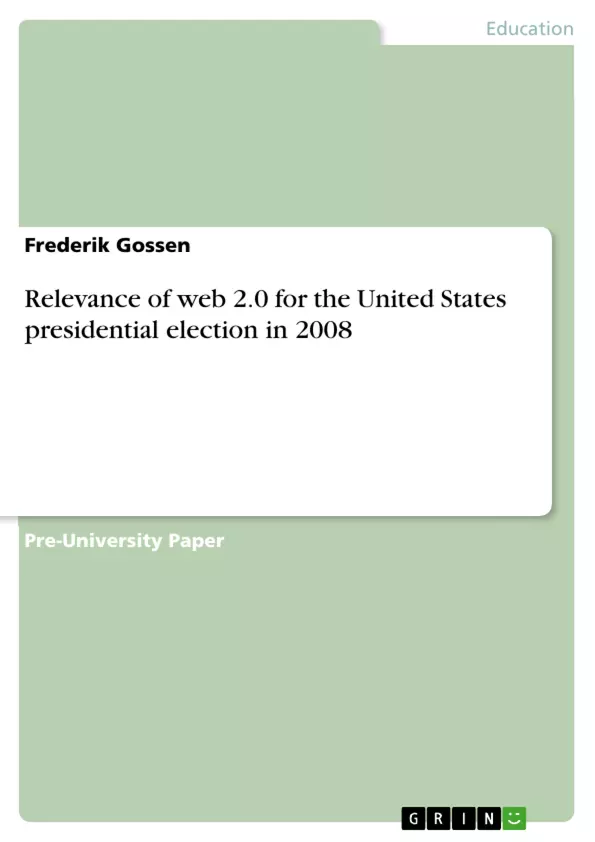The relevance of modern web 2.0 for the United States presidential election was often emphasized. Especially Twitter and YouTube seemed to have huge influence on the election campaigns but how did they get used during the campaigns? How did this new era of web influence the voters’ choice? The web obviously played an important role and was used to get the people involved. It helped to create an attachment to the political candidates and it was although a great technology for collecting donations. Especially Barack Obama used the web sent for his propose and had great success with this strategy. This scientific work will explain in which way the web got influence on the campaigns and their strategies. It will also explain the role of the voters, which is in general not as great as it often seems to be. In the end of my work there will also be a case study of 2008 that focuses Barack Obama and his campaign, which was rather more interesting than the Republicans’.
Inhaltsverzeichnis (Table of Contents)
- Preface
- Introduction
- What is web 2.0
- Four "key characteristics of web 2.0"
- Presence
- Modification
- User-generated content
- Social participation
- Certain examples of web 2.0
- YouTube
- Four "key characteristics of web 2.0"
- The System of presidential election
- The two major parties
- The Republican Party
- The Democratic Party
- Results in 2008
- The two major parties
- Strategy of a campaign
- "Top-down" approach
- "Bottom-up" approach
- Combined approach
- Role of the voter
- Collecting donations
- Case study of 2008
- Barack H. Obama
- John S. McCain
- Evaluation of the Relevance for politics today and in the future
Zielsetzung und Themenschwerpunkte (Objectives and Key Themes)
This scientific work aims to explore the impact of web 2.0 on the United States presidential election in 2008, specifically focusing on the use of platforms like Twitter and YouTube by campaign strategists. The work examines how web 2.0 influenced voter engagement, candidate outreach, and fundraising efforts.
- The rise of web 2.0 and its characteristics
- The role of web 2.0 platforms like Twitter and YouTube in election campaigns
- The impact of web 2.0 on voter behavior and engagement
- The use of web 2.0 for campaign strategies and fundraising
- A case study of Barack Obama's 2008 campaign and its utilization of web 2.0 technologies
Zusammenfassung der Kapitel (Chapter Summaries)
The text begins by defining web 2.0, differentiating it from its predecessor, web 1.0, and outlining four key characteristics of web 2.0, including presence, modification, user-generated content, and social participation. Examples like Twitter, YouTube, and Facebook are given to illustrate these aspects.
Following this, the text delves into the United States presidential election system, particularly focusing on the two major parties, the Republicans and the Democrats, and the 2008 election results.
The text then explores the different approaches to campaign strategy, including "top-down" and "bottom-up" strategies, and examines how web 2.0 can be utilized within these frameworks.
The role of the voter in the election process is then discussed, highlighting the growing importance of online participation and fundraising through web 2.0 platforms.
Finally, a case study of the 2008 presidential election focuses on the strategies of Barack Obama and John McCain, with particular attention paid to Obama's successful use of web 2.0 technologies.
Schlüsselwörter (Keywords)
This work focuses on the intersection of politics, technology, and social participation, with a particular emphasis on web 2.0 platforms like Twitter, YouTube, and Facebook. The text examines the relevance of these platforms for election campaigns, voter engagement, and the evolution of political strategy in the digital age.
- Citar trabajo
- Frederik Gossen (Autor), 2010, Relevance of web 2.0 for the United States presidential election in 2008, Múnich, GRIN Verlag, https://www.grin.com/document/167919



